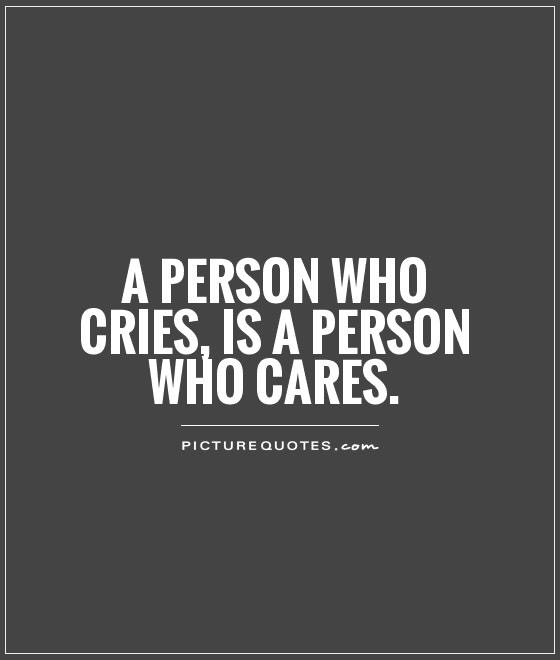Sharing is caring, but crying is caring too
 This week, I cried, I cried a lot. I cried not because I am weak but because I care. I care so much that it hurts sometimes. I want what’s best for my kids. I want to give them the best learning experiences possible. I want to give them the world. But anyone who is a teacher knows that this is hard work (or heart work as Paula Meyer and Sheila Vick always remind me)! And I am hard on myself. My expectations of myself are high. So, last week I cried, but for the first time ever, I didn’t just cry alone with my support system… I actually broke down in class with my students one morning, and I hated it. They were seeing me struggle – the person who is supposed to have it all together in their eyes fell apart. I tried to tell myself afterwards that it was okay because I am human, but truth be told, I felt horribly guilty. I got through the day and had some much needed good conversations with my support system and it felt like a weight was lifted off my shoulders. I was ready to pick up the pieces and put them back together better than they were before. But… I still felt guilty for having cried in front of my students.
This week, I cried, I cried a lot. I cried not because I am weak but because I care. I care so much that it hurts sometimes. I want what’s best for my kids. I want to give them the best learning experiences possible. I want to give them the world. But anyone who is a teacher knows that this is hard work (or heart work as Paula Meyer and Sheila Vick always remind me)! And I am hard on myself. My expectations of myself are high. So, last week I cried, but for the first time ever, I didn’t just cry alone with my support system… I actually broke down in class with my students one morning, and I hated it. They were seeing me struggle – the person who is supposed to have it all together in their eyes fell apart. I tried to tell myself afterwards that it was okay because I am human, but truth be told, I felt horribly guilty. I got through the day and had some much needed good conversations with my support system and it felt like a weight was lifted off my shoulders. I was ready to pick up the pieces and put them back together better than they were before. But… I still felt guilty for having cried in front of my students.
Then, the next night while driving, I was listening to The Innovator’s Mindset audio book by George Couros, and I was reminded that it is so important for us to model our struggles for our students. This quote by Scott McLeod really resonated with me:
How many of us purposefully and explicitly model the learning process for our children? How many of us stand up in front of kids and say, “This is what I’m learning right now, I’m not any good at the moment, but this is the process I’m following, and this is what my plan is for achieving success. And I’ll give you an update in a few weeks, and then another few weeks, and so on, about how I’m doing?” How many of us purposefully and explicitly show our students what it means to struggle with learning, overcome obstacles, and emerge on the other side more skilled and more knowledgeable than we were before? You already know the answer: nearly zero.
There are many reasons why we don’t model the learning process as adults, but one of the biggest ones is ego. We feel like we have to be the “experts” instead of the co-learners. Administrators can show no weakness in front of teachers. Teachers and parents can show no weaknesses in front of children.
What would our kids gain from us if, as educators and parents, we did a better job of showing that we too are learners? What would schools be like if the adults in the building purposefully and explicitly lived and shared the process of being a learner? What would education be like if we adults intentionally created opportunities to be co-learners with the children that we serve?
So, although I am certainly not encouraging everyone to cry in front of their students, this gave me an avenue to have an important follow up discussion with my students about what me crying in front of them actually meant. It meant that I was in my “little brain”. It meant that I’m still learning too and it’s not always easy. It meant that I don’t have all the answers. We talked about how they feel when they struggle, and many admitted that they’ve cried out of frustration and out of feeling defeated, too. We also discussed what I did afterwards, even though it was hard. Did I walk out of the classroom and call it a day? Did I decide to quit and not come back to teaching? Of course not. I took a few deep breaths, talked to people who helped me see a little bit clearer, made a new plan, tried a few different things, and persevered. For that, I am proud. Yes, my students saw me break down, but I’m hoping that what I modeled that day and over the next few days with our follow up conversations will help them understand that the learning process is sometimes hard and messy, even for adults!
This profession isn’t easy, but the beauty in teaching is that these kids mean everything to me, and they’re more than worth the tears and the hard work that it takes. They’re the best reason to want to persevere.

Leave a Reply